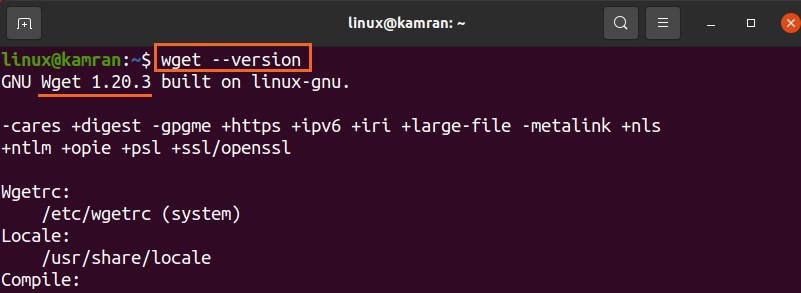

- Wget output file archive#
- Wget output file password#
- Wget output file Offline#
- Wget output file download#
You just need to replace USERNAME and SECRET with the appropriate information.
Wget output file password#
The first option is to supply the username and password in the wget command itself, which is not the safest method since your password is visible to anyone looking at your screen or viewing your user’s command history: These example commands will work with both FTP and HTTP.
Wget output file download#
If the HTTP or FTP server you are trying to download from requires authentication, there are a couple of options you have for supplying a username and password with wget.

Wget output file archive#
Then just pipe directly to your tar command.įor example, to download latest version of WordPress and open the tar archive in a single command: To do so, use the -O - option, which tells wget to download the file to standard output. You can save some time when downloading a tar archive by piping your wget command to tar so it downloads and decompresses all in one command. Whether or not you’ll need these commands just depends on the site you’re mirroring.
Wget output file Offline#
The -k option can also make the site display better, as it will rename the directories and references as necessary for offline viewing. In most cases, you’ll also want to include the -p option in your command, which tells wget to download all the files that would be required to display the offline website correctly, such as style sheets. Include the -m (mirror) flag in your wget command and the URL of the site you want to mirror. Wget can find all these files automatically and download them into the same directory structure as the website, which would essentially give you an offline version of that site. js (JavaScript), and a variety of others. Websites are made up of HTML files, and usually you’ll also find some. This makes wget an extremely powerful tool because not only can it download a directory or multiple files, it can actually mirror an entire website. Wget has the ability to follow all the links on a website, downloading everything it comes across as it goes. If you are trying to download the directory of a website, the command is pretty much the same but in most cases you will also want to append the -no-parent (or just -np) option so wget doesn’t try to follow any links back to the index of the site. For FTP, just use the -r (recursive) option in your command and specify the directory you want to get. Wget can download an entire directory, recursively, from either an FTP or web (HTTP/HTTPS) server. For example, this would download a file at a maximum rate of 500 KB per second: Use the -limit-rate flag and specify k for kilobytes, m for megabytes, or g for gigabytes. This is useful if you don’t want a large download to steal all your network bandwidth, which might give latency to other users on your network. Then, run the wget command with the -i option and specify the path to your text document.Īnother handy option of wget is to limit its download speed. ?, -helpĭownload only when remote file is newer than local file or local file is missing.If you want to download more than one file, create a text document that contains a list of download links, with each URL on a separate line. if you specify any options before this one, they might get overridden by the contents of the rcfile. This will be loaded in the order it was specified - e.g. Write the file that is being downloaded to standard output. Write the file that is being downloaded to the specified file.

Show dots as progress indication -o, -outputfile Workgroup to use (optional) -n, -nonpromptĭon't ask anything (non-interactive) -d, -debuglevel=INT Username (and password) to use -w, -workgroup=STRING Recursively download files -U, -user= username

Automatically resume aborted files -R, -recursive


 0 kommentar(er)
0 kommentar(er)
